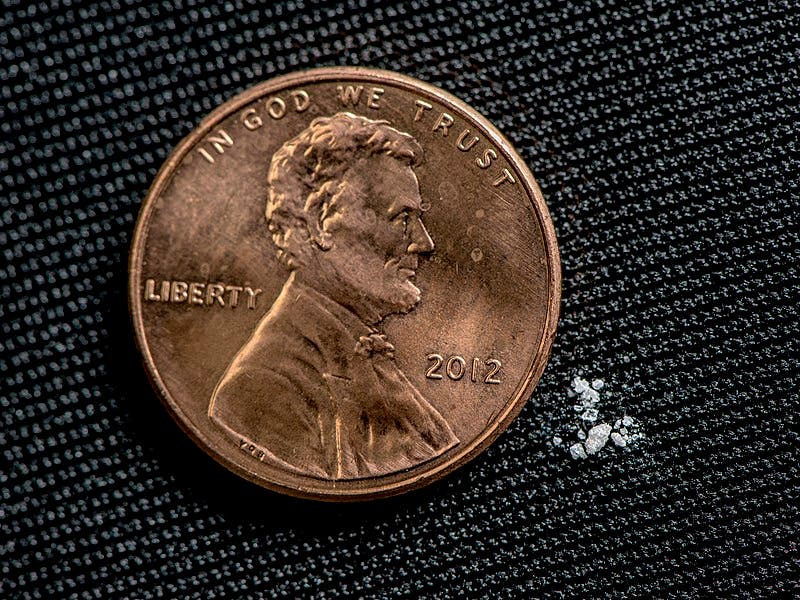
In 2018, more than 68,000 Americans were killed by prescription opioid painkillers and other drugs, particularly heroin, fentanyl, and methamphetamine. That’s a kill rate higher than the peak annual deaths from car crashes, AIDS, or guns.
Last month, the Centers for Disease Control and Prevention finally reported some good news — for the first time in three decades, the number of overdose fatalities has dropped, with 2018 experiencing a 5% decline compared to 2017. However, this decline may be extremely short-lived if fentanyl gets a wider grip on the country, a new report issued by RAND warns.
Fentanyl — widely considered the deadliest drug in America — is a very powerful synthetic opioid that’s 50 to 100 times more concentrated than morphine. For a user with little tolerance to the drug, even less than a milligram of fentanyl can trigger an overdose.
Dealers often mix fentanyl with heroin to make it stronger and earn a fatter profit, as the former is also cheaper. Whenever fentanyl appears in an area, drug overdoses inevitably spike.
This has mostly happened in the Northeast and Midwest parts of the country. The fact that fentanyl is contained in certain regions sounds promising. However, it also suggests that it has a lot of room to grow, which is very concerning.
Vox reports that overdose deaths linked to synthetic opioids, like fentanyl, went up from more than 29,000 in 2017 to nearly 32,000 in 2018 — and if drug trafficking networks in the west change tactics and suppliers to match those in the east, then the number of overdoses could skyrocket to depressingly high levels.
So, what to do? RAND says that policymakers must urgently innovate, especially in places where synthetic opioids are entrenched.
“New approaches to responding to the current crisis should be seriously considered (e.g., creatively disrupting online transactions; supervised consumption sites; novel, evidence-informed treatment modalities, such as heroin-assisted treatment; drug content testing). This is necessitated by the nature and scale of the challenge brought by synthetic opioids, which, in their current forms and methods of distribution, represent a departure from previous crises. Indeed, resolution of this crisis might require approaches or technologies that do not exist today,” the report outlines.
One possible innovation involves treating heroin addiction through special programs. The controversial measure would involve offering prescription heroin in a medically supervised setting to patients who use synthetic opioids. In the same line, the author of the report recommends setting up supervised consumption sites.





